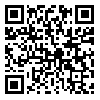Volume 8, Issue 3 (12-2018)
cmja 2018, 8(3): 2427-2432 |
Back to browse issues page
1- , PhD in Range Management,department of Range and Watershed Management, Faculty of Natural Resources and Geology, University of Kashan, Kashan, Iran.. , mghavam@kashanu.ac.ir
2- Department of Range and Watershed Management, Faculty of Natural Resources and Geology, University of Kashan, Kashan. Iran
2- Department of Range and Watershed Management, Faculty of Natural Resources and Geology, University of Kashan, Kashan. Iran
Abstract: (3929 Views)
Introduction: Various methods of using medicinal herbs are among the different traditions and cultures of Iranian tribes. This study aimed to investigate the role of different socio-climatic indices in the use of medicinal herbs by women in 2015. The study population of this research were the students of University of Kashan.
Materials and Methods: This descriptive-analytical study was conducted as a survey. The main tool was a questionnaire with 5 general and 47 special statements.
Results: The type of climate had a significant effect on the use of medicinal plants by women. Advices from friends and prescriptions of traditional healers played a significant role in the tendency toward this kind of care. The highest consumption rate was related to peppermint and the lowest to fennel.
Conclusion: Women do not use medicinal herbs in all types of diseases. Also, they do not use the same amount of all the herbs. In some diseases, they tend to use these plants more and in other cases, they are less aware of them or tend to use them less.
Materials and Methods: This descriptive-analytical study was conducted as a survey. The main tool was a questionnaire with 5 general and 47 special statements.
Results: The type of climate had a significant effect on the use of medicinal plants by women. Advices from friends and prescriptions of traditional healers played a significant role in the tendency toward this kind of care. The highest consumption rate was related to peppermint and the lowest to fennel.
Conclusion: Women do not use medicinal herbs in all types of diseases. Also, they do not use the same amount of all the herbs. In some diseases, they tend to use these plants more and in other cases, they are less aware of them or tend to use them less.
Type of Study: Research |
Subject:
Medicinal Plants
| Rights and permissions | |
 |
This work is licensed under a Creative Commons Attribution-NonCommercial 4.0 International License. |



